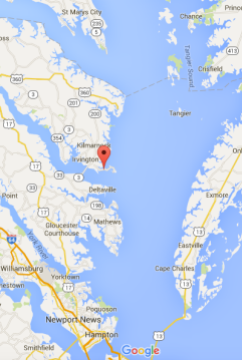Month: December 2015
Microbeads Banned in US Waters
Good news for the Chesapeake Bay, and watersheds around the nation!
Earlier this month, Congress voted to ban microbeads in common personal hygiene products, such as soaps, toothpastes and facial cleansers. The bill – the Microbead-Free Waters Act of 2015- was passed by the House of Representatives first, and then the Senate on December 18. President Obama signed the bill into law yesterday.
Microbeads, found in many health and beauty products, cause major problems in watersheds. The beads, which are rinsed down the drain with use, are too small to be filtered out in wastewater treatment plants, and end up directly in our waterways. These beads, which are plastic, adhere to PCBs (polychlorinated biphenyls) in streams and estuaries, and are toxic to marine animals. Toxins make their way up the food chain, and have been found in significantly high concentrations in fish in watersheds such as the Great Lakes.
Nine states, and several municipalities around the country, have already passed bans on products with these beads, but this is the first nationwide bill of its kind. With the Microbead-Free Waters Act, all production of microbeads will be phased out of personal care products by July 1, 2017, with production phase out of microbeads in over-the-counter drugs and cosmetics to follow in July 2018 (with a ban on sales enforced by July 2019).
To read more about plastic debris in the Chesapeake Bay, CityLab has a post on Julie Lawson’s (director of Trash Free Maryland) efforts to document plastic concentrations in Bay waters. Lawson’s team has found plastic debris from what they suspect comes from film associated with mulching on watershed farms. If or when the lab working on these water samples confirms this, our region will likely face a fresh set of challenges, revolving around the phase-out of harmful products from the agricultural sector.
Sources: New York Times, Washington Post, Detroit News
Water Quality Monitoring on Antipoison Creek
This autumn, I have begun water quality monitoring on Antipoison Creek, a small tributary of the Chesapeake Bay, located on Virginia’s Northern Neck. I have been collecting and preparing water samples for analysis of nitrates, phosphates, ammonium, and chlorophyll, and working with the University of Maryland Center for Environmental Studies’ Nutrient Analytical Services Laboratory (NASL) on advanced analytical services for these water chemistry results.
Water sampling bottles are prepared using an acid wash procedure, to ensure that no remaining particles from manufacturing or previous water samples corrupt the results. When the bottles are ready, I collect samples from four locations via kayak along Antipoison Creek (2 samples per location, using a three-sample rinse method).
The first location is upstream from the beach from where I depart; the second location is several feet in front of the beach. The third and fourth locations are further downstream, at the mouth of Little Bay, (shown on the map below as Fleet’s Bay- Little Bay lies just between Fleet’s Bay and the mainland).
Once the samples are collected, they are filtered and divided into auto analyzer cups to be tested for nitrate, phosphate, and ammonium levels at NASL. (See photo below). Samples are frozen until they can be transported to the lab.
The samples must be filtered differently for chlorophyll- the lab receives just a filter pad for this, no water samples.
It took a little longer to get all of the supplies for the chlorophyll filtering procedure, and I have yet to send in samples for chlorophyll testing. However, the first results for nitrates, phosphates and ammonium recently came in. The ammonium test results have to be crosschecked with the pH levels of the samples, but I was able to read the phosphate and nitrate results.
According to North Carolina State University, phosphate designated use limits for estuaries, in order to support maximum diversity of aquatic life, must be 0.01 mg/L; for moderate diversity the phosphate limit is 0.1 mg/l.
Recommended nitrate limits are 0.1 mg/l for maximum diversity, and 1.0 mg/l for moderate diversity.
The results we received for phosphate (PO4) and nitrates (NO23) from Antipoison Creek were as follows (see bolded figures):

The results for phosphates and nitrates are significantly lower than limits set for water quality standards– which is a good thing- it means there is not an excess level of nutrients in the water, which can impair aquatic life. There is a significant amount of oyster production taking place in this sample area- oysters are natural filterers of nutrients and sediment. Perhaps this has an impact on our results. This is only one month’s results, however, (September), and results from following months must be compared before further analysis can be made.
Future chlorophyll readings will give an indication of algae levels in the sample region. Ammonium is another type of nitrogen in waters- it is produced when plants and animals decompose, and is present in animal waste. It acts as a pollutant when levels are too high, impacting local aquatic species. We should be seeing low results for ammonium as well to indicate good water quality in this portion of Antipoison Creek.



